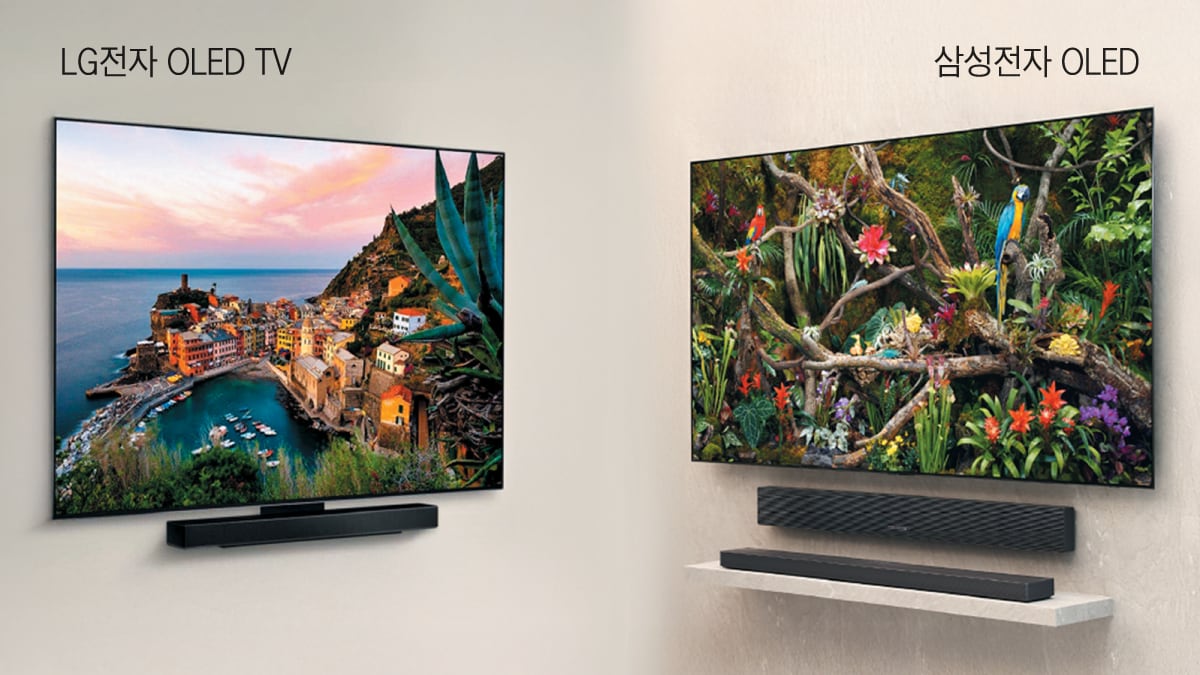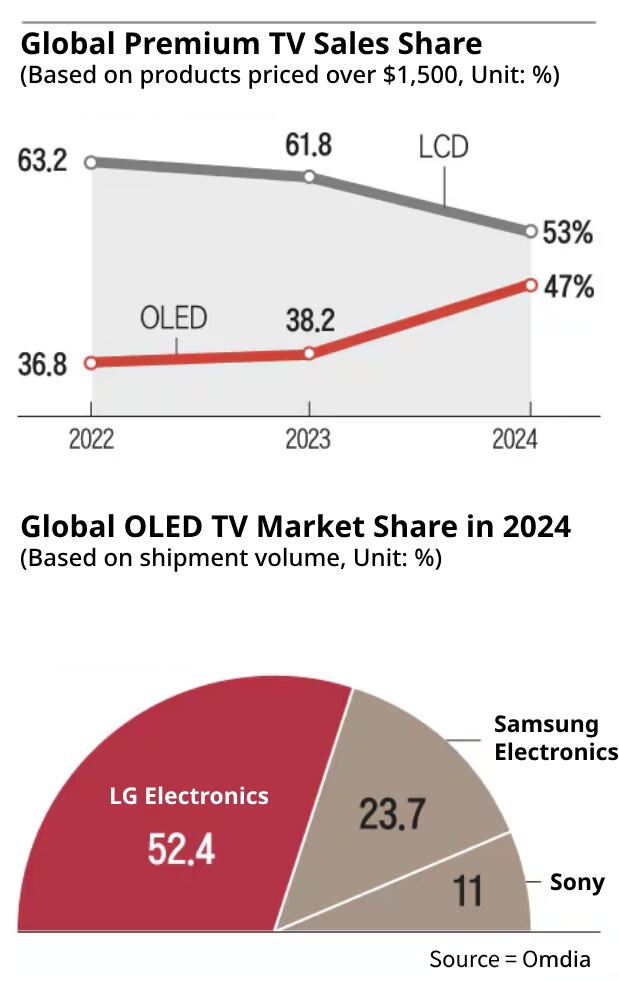
Samsung Electronics and LG Electronics, the leading producers of televisions globally based on revenue, are stepping up their contest in the organic light-emitting diode (OLED) TV sector. Despite liquid crystal display (LCD) TVs continuing to hold a substantial portion of the worldwide market, Chinese enterprises have been increasing their influence through cost-effective LCD products. As a result, South Korean corporations are refocusing their efforts on high-end TV sets, making OLED technology central to this competitive arena.
OLED is continuing to grow in popularity within the upscale television segment. Data from market analysis company Omdia reveals that OLED TVs made up 47% of worldwide premium TV sales—which includes models costing over $1,500—in 2024, an increase from their share of 36.8% back in 2022.
LG Electronics has been a dominant force in the OLED sector for quite some time, but Samsung Electronics has intensified its push into the market with an expanded lineup of models. Both firms are now vying fiercely for supremacy as Omdia forecasts that the market will be valued at 16.8 billion won ($11.37 million) by 2025. This intense rivalry may considerably influence how they position themselves within the high-end television industry.

During a recent product unveiling, Lim Seong-taek, who serves as the executive vice president at Samsung Electronics, stated that their primary objective is to become number one in South Korea’s OLED TV sector. Although Samsung leads globally in total television sales, it lags behind LG when it comes to OLED displays. In terms of unit shipments worldwide, Samsung accounts for approximately 23.7%, whereas LG commands about 52.4% of the OLED TV segment. To narrow this disparity, Samsung intends to broaden its range of OLED televisions from ten to fourteen different models within this year. Additionally, they aim to enhance their products' capabilities through advanced features like AI technology designed to improve lower resolution images and minimize glare on screens. Furthermore, these new sets will come equipped with AI-driven functionalities including live subtitles translation and personalized viewing analytics, all aimed at bolstering their competitive edge in the marketplace.
Ever since LG Electronics became the pioneer in bringing OLED TV technology to market back in 2013, they have held onto their dominant position within this sector. Recently, earlier this month, the firm debuted several new OLED model lines across eight nations in Europe such as the UK, Germany, and Switzerland. So far, LG has unveiled its 2025 OLED series in approximately twenty different countries with intentions of broadening distribution to around one hundred fifty markets.
LG has enhanced screen luminosity in its newest "LG OLED Evo" series through an innovative layered design of its organic materials. These updated models can achieve brightness levels up to triple those of standard OLED televisions. Additionally, LG is solidifying its market dominance with support for wirelessly transmitting HD videos and integrating AI-powered personalized interfaces, establishing OLED technology at the heart of their top-tier offerings.
OLED continues to solidify its presence in the premium TV segment. Among LG’s high-end offerings, OLED models now account for 74.9%. Samsung has also seen rapid growth, with the share of OLED models in its premium lineup rising from 7.1% in 2022 to 31.8% in 2024.
The escalating rivalry between Samsung and LG in the OLED sector is fueled by the rising clout of Chinese competitors. Companies like TCL, Hisense, and Xiaomi have strengthened their presence in the LCD market with budget-friendly offerings, boosting their collective worldwide market share from 24.3% in 2022 to 29.2% in 2024. Over this timeframe, the joint global market share for Samsung and LG in the LCD television segment dropped from 44.7% to 40.5%.
Samsung's comprehensive move into the OLED market is anticipated to speed up industry growth. Additionally, South Korean firms continue to hold a technological advantage over their Chinese counterparts who are not yet at par with OLED production capacities. Although Chinese panel producers like BOE can create smaller OLED displays, they haven’t progressed far enough for larger screens. At present, LG Display accounts for approximately 80% of global OLED television panel manufacturing, solidifying South Korea’s dominance in this field.

Out Of Topic Show Konversi KodeHide Konversi Kode Show EmoticonHide Emoticon